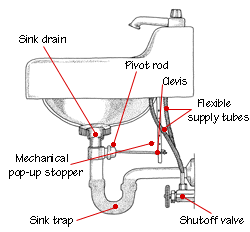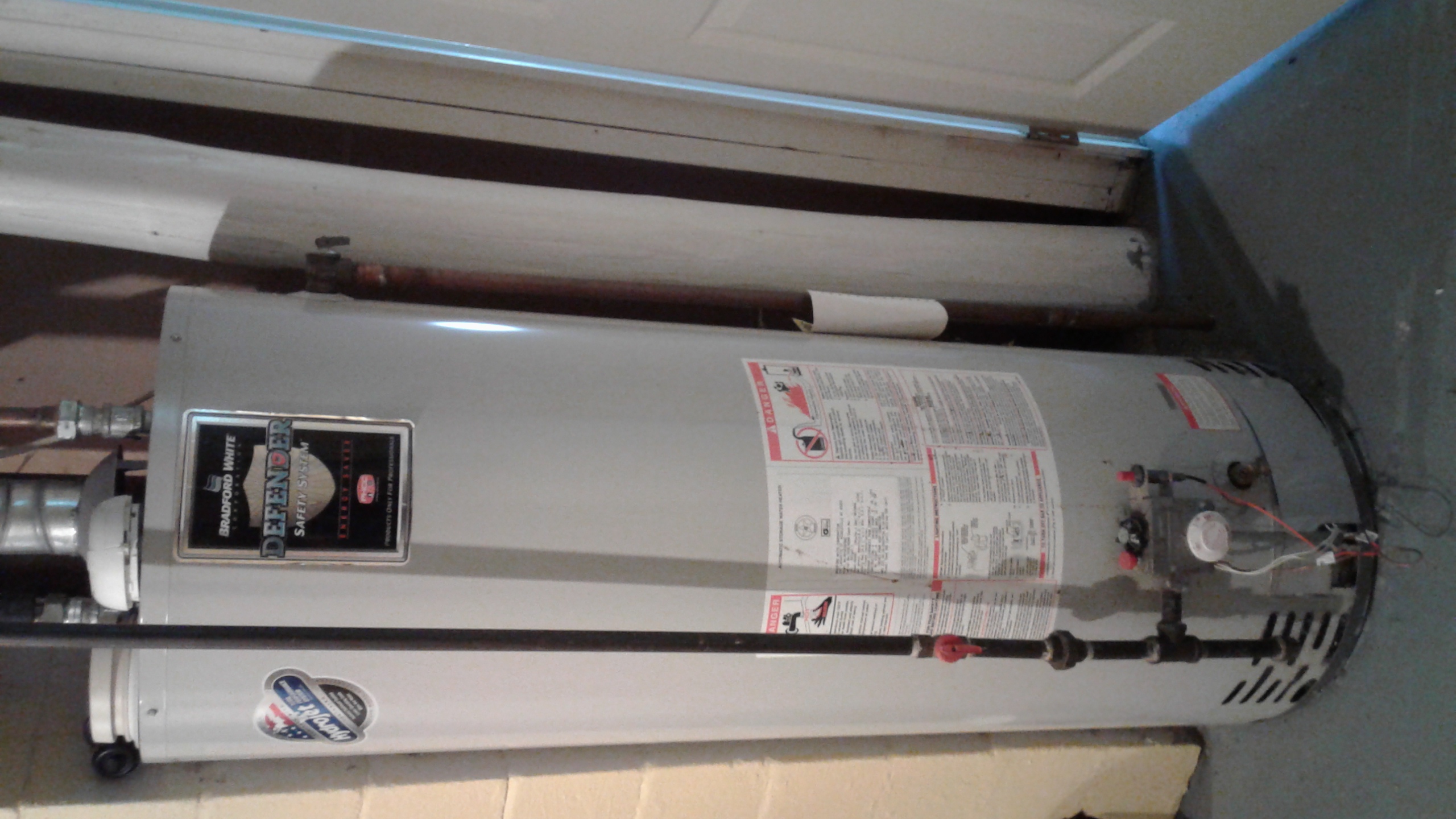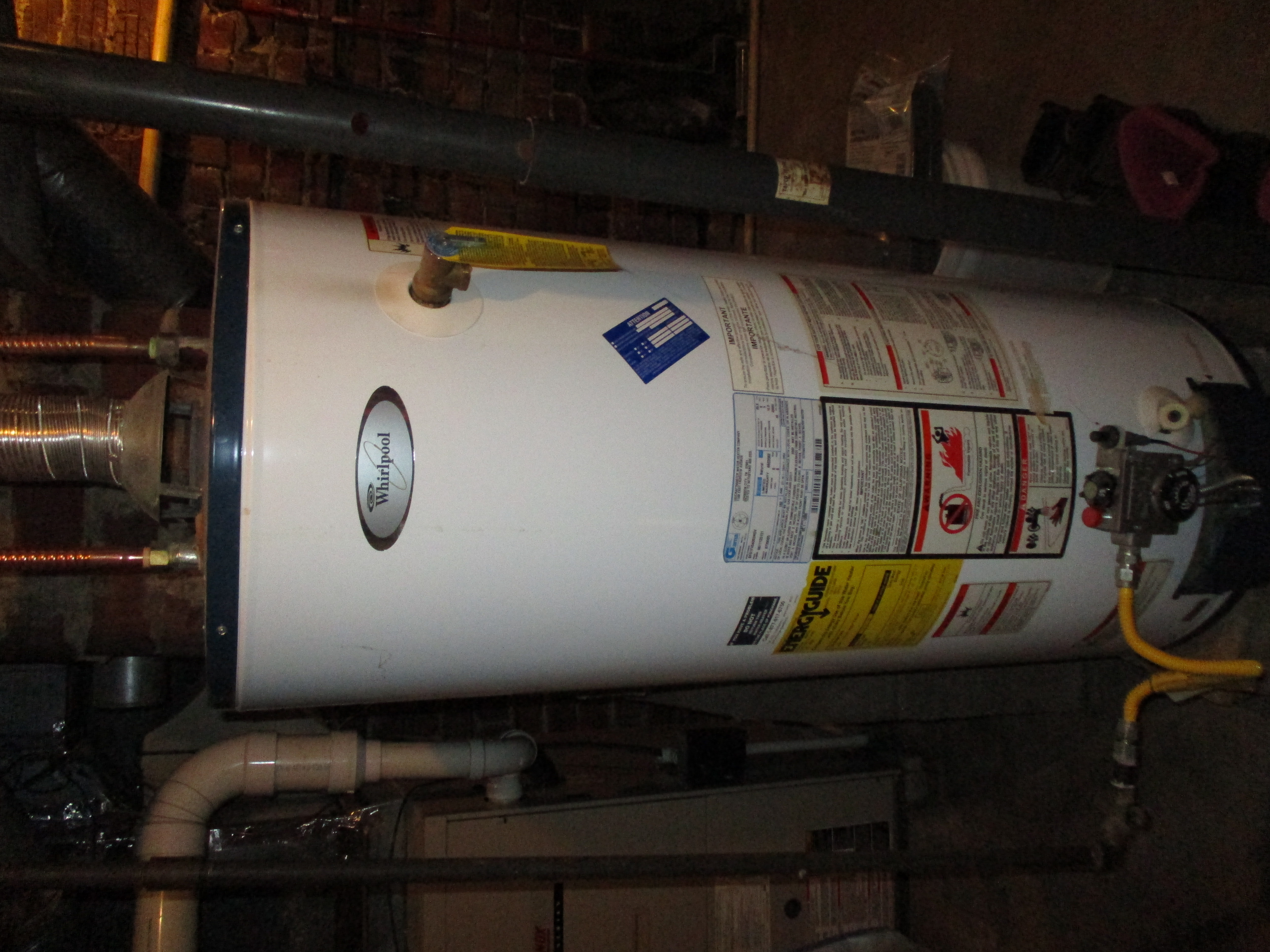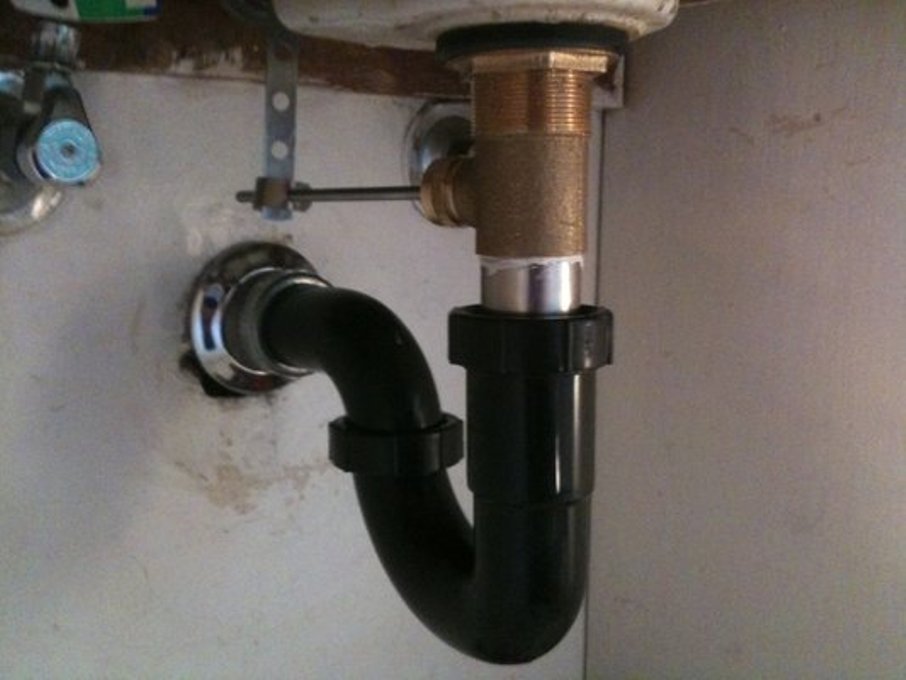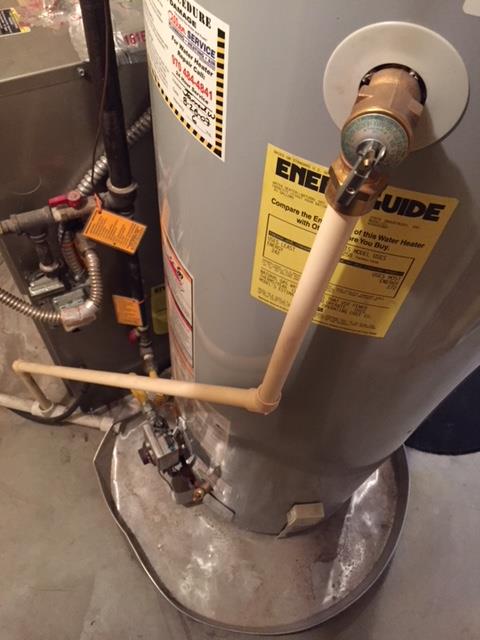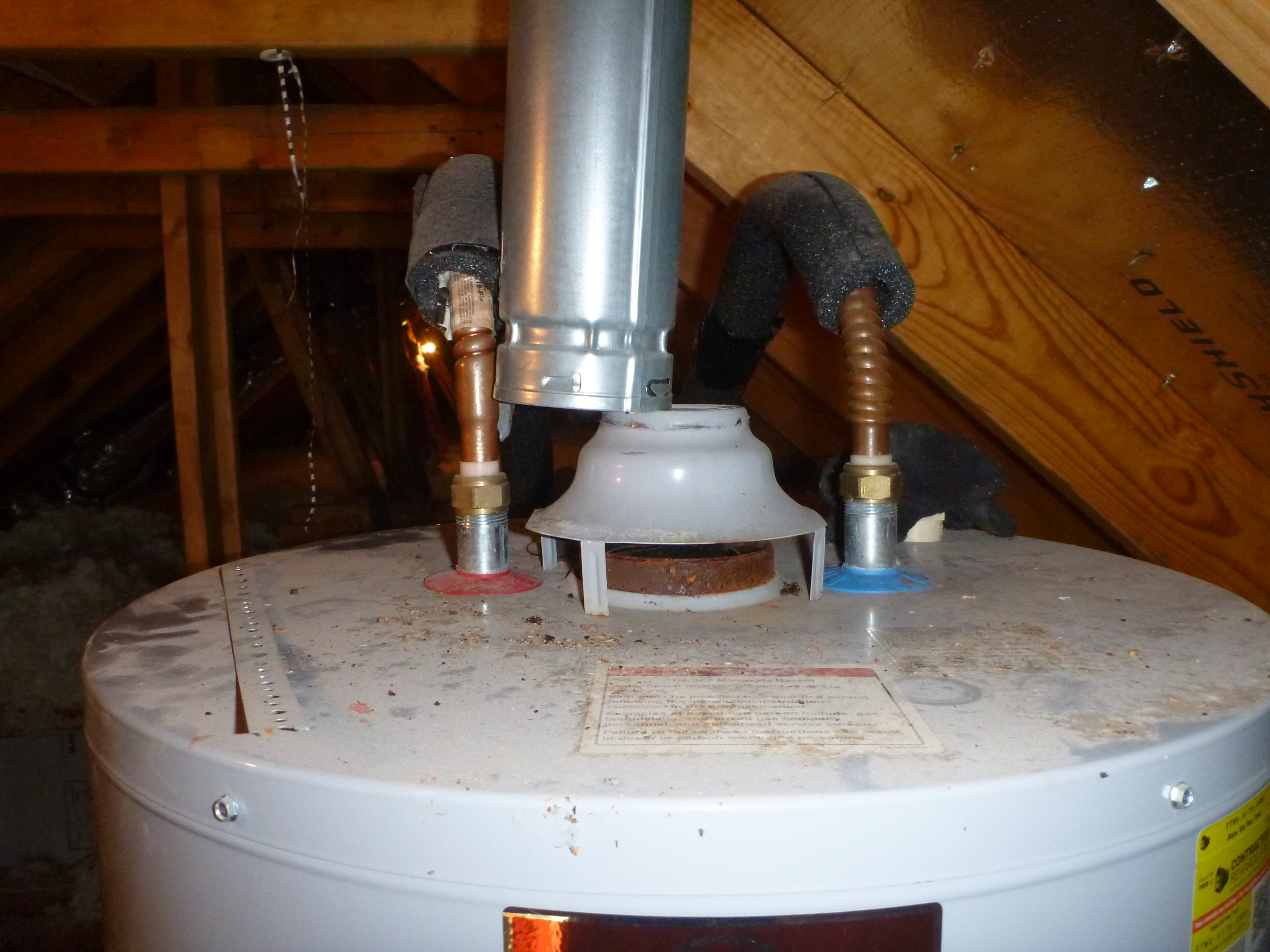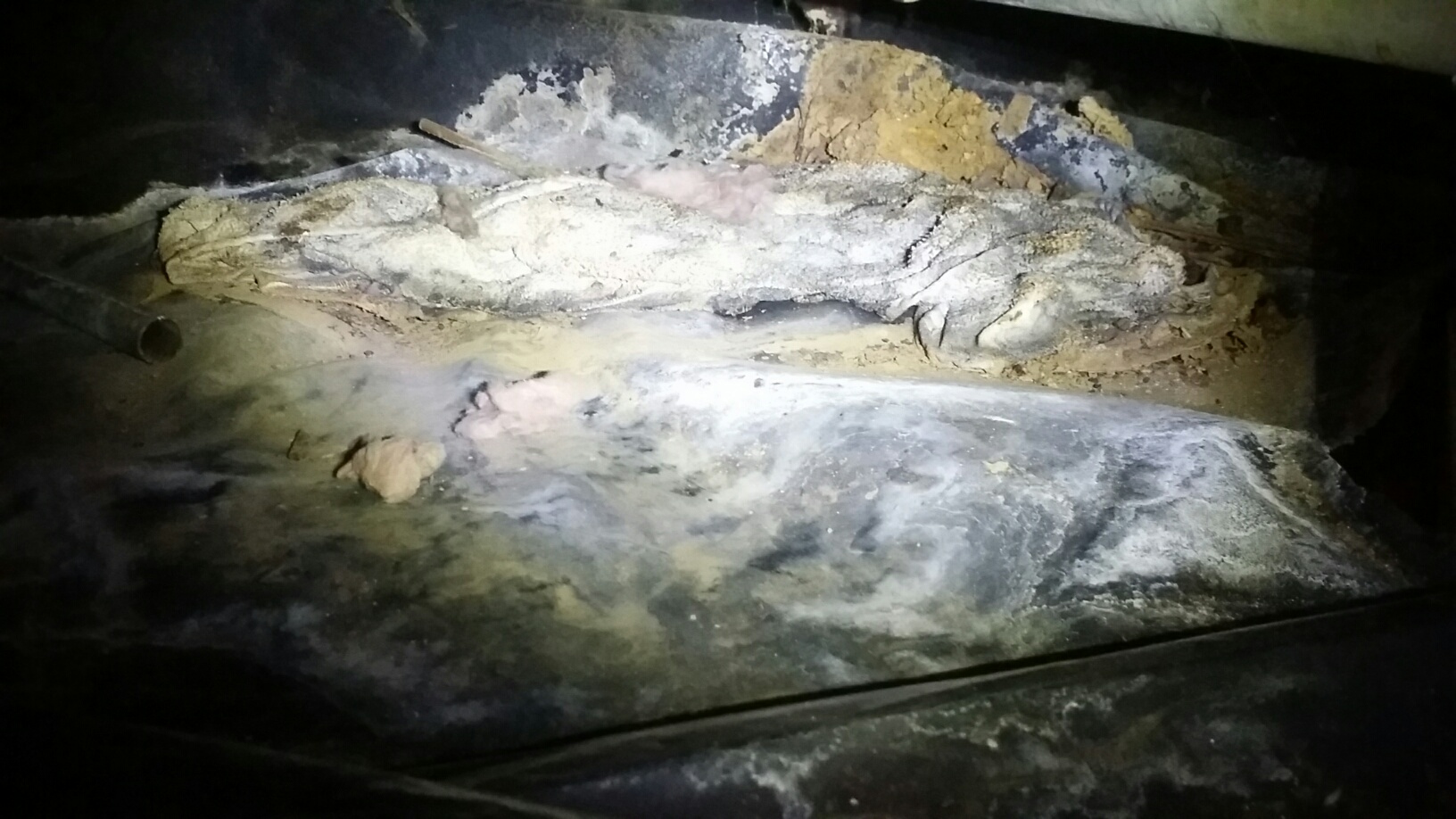I chose the image “S-trap vs P-trap” located in the plumbing image gallery. I learned from this image that S-traps are not an acceptable form of trap. I also learned that P-traps must have a liquid seal greater than 2 inches but less than 4 inches.
This hot water heater will need to have a few things checked upon inspection. The gas fuel shut-off valve needs to be within 6 feet of the appliance. The TPR valve needs to be present. The vent pipe needs to be of the correct size and vented properly to the chimney, as in this case.
“Dryer Vent Safety” The dryer vent needs to be vented to the outside so that the humidity and dryer lint are not affecting either the components of the building or possibly the lint becomes a fire hazard. The vents need to be made of the rigid metal type, instead of the soft plastic type or the flexible metal. The trapped lint has been known to cause fires.
Gas fired water heater was functional on day of inspection. PRV needs to be extended down to 4-6" above floor, safety concern. Dielectric unions should be installed between dissimilar metals to reduce corrosion and extend life of WH and piping.
Pressure relief valve piping is PVC and not suitable for this temperature and pressure range. This is a safety concern. Discharge of PRV MUST be visible in same room as appliance. Air gap to reducer may be installed. Bonding wire must be present across water heater piping.
The domestic water heater has a TPR valve as required, however the TPR drain line has been reduced to which is not in compliance with the manufactures installation guidelines as shown on the back side of the tag attached to the TPR. It is recommended that a licensed plumber make necessary correction.
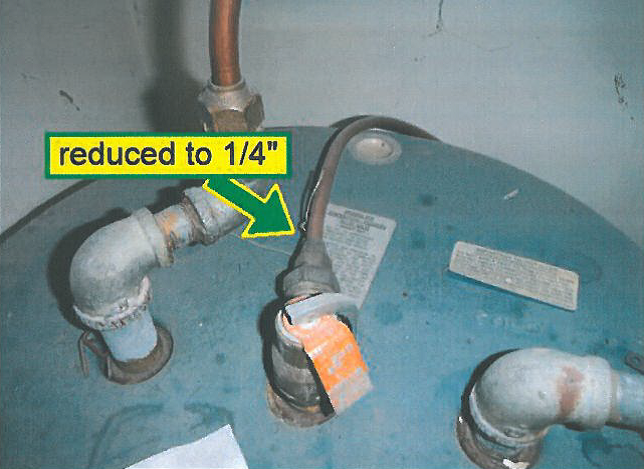
Water Heater Expansion Tanks defiantly serve a purpose in making water heater safer by allowing for the expansion of water due to changes in the water temperature, however it does not replace the need for a TPR valve. The TPR valve is necessary to allow for the release of water in the event that the temperature or pressure becomes greater than what the tank is designed for and able to withstand
Beneath a kitchen or bathroom sink drain is a pipe with a sharp bend in it. This p-trap has a pair of reasons for its design. These traps prevent sewer gases from entering the home and stop heavy items that have fallen down the sink.
Beneath a kitchen or bathroom sink drain is a pipe with a sharp bend in it. This p-trap has a pair of reasons for its design. These traps prevent sewer gases from entering the home and stop heavy items that have fallen down the sink.
Home inspectors are required to inspect and describe the plumbing system of a dwelling including describing the water source, the supply piping, the water heater, and inspect sinks, toilets, and visible drains. Inspectors should also note all shut off valves when visible.
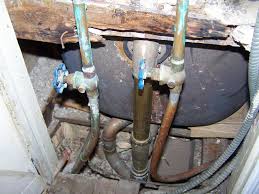
Home inspectors should be familiar with and use proper terminology when describing the plumbing system. Some home owners may not be familiar with these terms and if that is the case the inspector can explain in simple terms what he is talking about.
For a home inspector you always have to own basic tolls.
some of these tools are a set of screw drivers,electrical detector,stud detector,humidity detector,hummer,ladder …ect.
The decision is based on how often the tool will be used.
Home inspection doesn’t require large tolls or equipment generally.
This photo of the gas water heater shows the Temperature/Pressure Relief (TPR) valve and it’s associated discharge pipe. No leakage was observed from the valve. The discharge pipe is made from CPVC, which is suitable for hot water applications, and it discharges appropriately above the adjacent floor drain. Note that the catch pan for the water heater is bent/deformed, which may reduce its effectiveness in the case of a water leak.
From the image titled ‘High Temperature Gas Shut Off’ in the image gallery, I learned about a safety device that I don’t recall from the Plumbing Overview course. This device is designed to stop the flow of gas to the water heater burner, should the water temperature get too high. The device appears to feature a manual reset button, such that the gas flow could be restored once the water temperature returned to a normal range.
The pictured gas water heater disconnected vent pipe connection at the draft hood was observed during an 11th month warranty inspection. The condition was allowing exhaust gas into the attic space rather than through the vent pipe to the exterior. The vent pipe connection to draft hood must be sized and securely fastened per manufacturer’s specifications, and air tight.
A lavatory is a sink that is located in the bathroom. There are many different kinds of lavatories such as pedestal, under-mount, top-mount, and wall-mounted. It is important to understand hoe each different type of lavatory operates so when it comes time to do a inspection you have a understanding of all the different makes and models
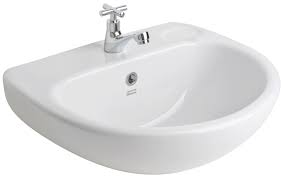
There are many different types of floor and beam systems that can be used in residential and commercial buildings. Solid wood, plywood, laminated veneer, parallel strand, meat truss, wood truss, and wood “I” or I joists can all be used. When doing a inspection it would be good to familiarize yourself with all the different kinds of beam material so you have a understanding of each ones function and purpose.
Heres an example of why it is vital that home inspectors try to evaluate the conditions of crawlspaces.
A leaking shower drain that has been leaking for many years and the homeowners had no idea. Not only will sewer leaks potentially cause wood rot, mold, mildew and odors, but provide a breeding ground for bacteria.
Carpeted Bathrooms:
Carpets are sometimes installed in residential bathrooms for aesthetic and comfort purposes. Carpets are prohibited from being installed in bathrooms in commercial buildings. Besides looking at it from a sanitary stance, carpet and padding materials retain moisture. Moisture in residential structures is the leading cause for mold growth and pest infestations.
Upon arrival for a typical home inspection of the bathroom and piping system, one should apply all of the traits and principles that have been learned. After observation of all the underneath piping for the proper installation, record your findings.
After further review of the water supply in into sink and dishwasher, the following was observed. Pipe fitting in conjunction with the lower sink P trap appeared to have corrosion from the drainage intake. The P trap showed signs of rust, and flaking. This should be forward to the proper certified installer and maintenance, for further evaluations.
